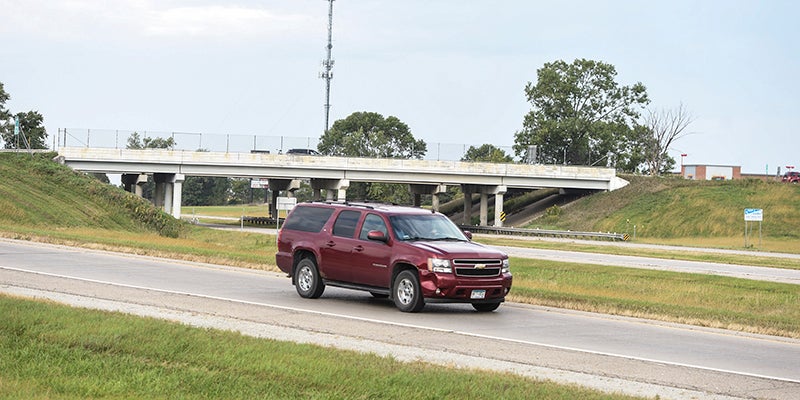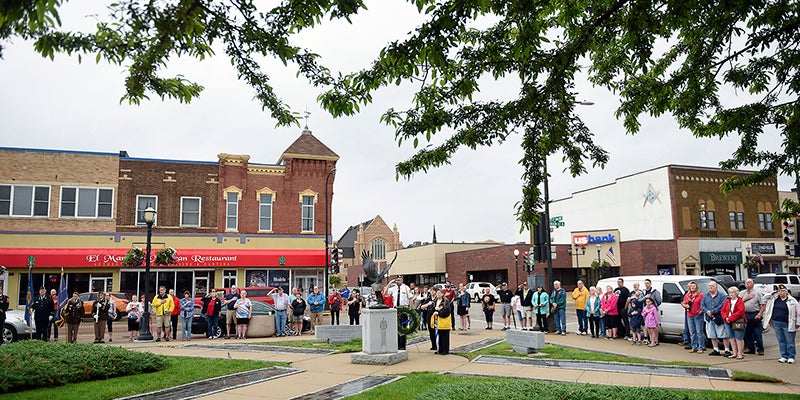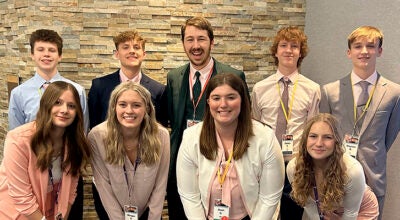Council to seek property owner input for sound barrier
Published 6:58 pm Tuesday, March 21, 2023

- A vehicle drives down the entrance ramp to Interstate 90, one of six bridges that will be replaced in the next three years. Herald file photo
|
Getting your Trinity Audio player ready...
|
While nothing solid has been decided, steps were taken by the Austin City Council Monday night on a possible noise barrier that would be built along Interstate 90 eastbound.
The project, which City Engineer Steven Lang said would cost just under an estimated $1 million dollars, would be constructed along a portion of I-90 between Second Street and 14th Street NW. If approved, construction of the barrier would likely take place in 2026, toward the end of the Minnesota Department of Transportation’s bridge project that will replace bridges in six spots on I-90.
MnDOT would cover 90% of the cost with the City of Austin needing to fund the remaining 10%.
Lang told the board during Monday night’s work session that initial estimates placed the project cost around $541,800 at $35 per square foot, however, that was an older estimate.
“I believe that number is low,” Lang said. “The old number doesn’t reflect current construction costs.”
Instead, Lang estimated an increase to $52.50 per square foot coming to the $1 million estimate. In this scenario, Austin would have to fund $100,000 of the project.
A study conducted of properties next to the interstate where the barrier would be built revealed that a barrier, either constructed of cement or wood, would decrease noise levels by an average of 6 decibels, with the highest decrease being 14.6 decibels. In total, the study reflected a 89.8 decibel reduction for the entire area surveyed.
Lang gave six options to the council on how the project would be funded, including using tax levy dollars, which some council members were hesitant to do.
The other options called for various ways to spread the cost among property owners depending on levels of descending decibel decreases.
“I do struggle with putting tax levy dollars in,” council member Jason Baskin said. “I like the idea of doing it based on impact. It’s novel, interesting.”
However, rather than making a decision, the council advised Lang to poll property owners in order to gauge just how many were in favor or against the project.
“I struggle with forcing something down someone’s throat,” Baskin said.
Two options for the barrier will be sent to property owners. The first option would spread cost among a larger number of property owners based on a lower decibel decrease, while the other would concentrate cost to property owners based on a higher base threshold of decibel decrease, thus requiring property owners to pay more.
For instance, in the first option the lowest decibel reduction by the wall would be 1.2 decibel levels with an estimated cost of $1,245.98. Meanwhile, in the other option those property owners with a decrease in decibels of at least 3 would be asked to pay. In that scenario, the lowest decrease was 3.3 decibels resulting in a cost to the property owner of $4,414.57.
The process of looking into a noise barrier began when property owners came to the council late last year complaining about noise levels from the interstate, explaining that it was hard to have any outdoor activities because of the noise.
In September, the council agreed to the noise study. Lang said Monday night that if the wall is built it would be 17 feet high with concrete pillars. While the wall itself could be concrete or wood, Lang also said that a wood wall would require more maintenance over the years.
Whitewater park
During the regular meeting, the council agreed during to help fund a feasibility study looking into whether a whitewater park near downtown Austin would be viable on the Cedar River.
The city will chip in $10,000 — $5,000 from 2023 contingency and $5,000 from Parks, Recreation and Forestry’s Capital Improvement. That money would be added to private funds already committed.
If the park were to be approved, it would be built near the Fourth Avenue NW dam on the stretch of the river running on the east of the Riverside Arena parking lot. Rocks and other material would be added to create whitewater conditions that would be good for tubing, kayaking and other water activities.
It would also be the first such park in the state of Minnesota and would be modeled similar to parks in Iowa including that state’s first park in Charles City.
“It’s been highly successful for them,” said Nathan Smith, who has been leading the effort of looking into the park. “We can expect new businesses … based on dozens of other whitewater parks in the country.”
Street Projects
Following public hearings, the City Council gave the green light to this year’s street reconstruction projects in Austin by declaring resolutions for cost and assessment roles.
All projects were passed with no changes to plans except for a project on Seventh Avenue NE (19th Drive to 21st Street NE) and 19th Drive (Sixth Avenue to Seventh Avenue NE).
The council voted 5-1 to move ahead with the project without adding sidewalks to the area after property owners came to the council over concerns of unwanted changes to property, landscaping and trees arguing that there wasn’t enough traffic in the area to warrant adding the sidewalks.
The other street projects approved included the following:
• Fifth Avenue NW (20th Street to 22nd Street NW), Sixth Avenue NW (22nd Street NW to dead end) and 20th Street NW (Fourth Avenue NW to dead end). Amount assessed: $185,109.50.
• First Street NW (Oakland Avenue West to First Drive NW). Amount Assessed: $233,497.56
• Second Street SW (10th Avenue to 12th Avenue SW), 10th Avenue SW (Second Drive to Fourth Street SW) and 11th Avenue SW (Second Drive to Fourth Street SW). Amount assessed: $279,514.79.
• Hormel Drive (Fourth Street to Eighth Street NE). Amount assessed: $81,527.88
• Third Avenue SW (20th Street to 21st Street SW), 21st Street SW (22nd Street to Sixth Avenue SW) and 22nd Street SW (Oakland Avenue to Third Avenue SW). Amount assessed: $37,618.76.




